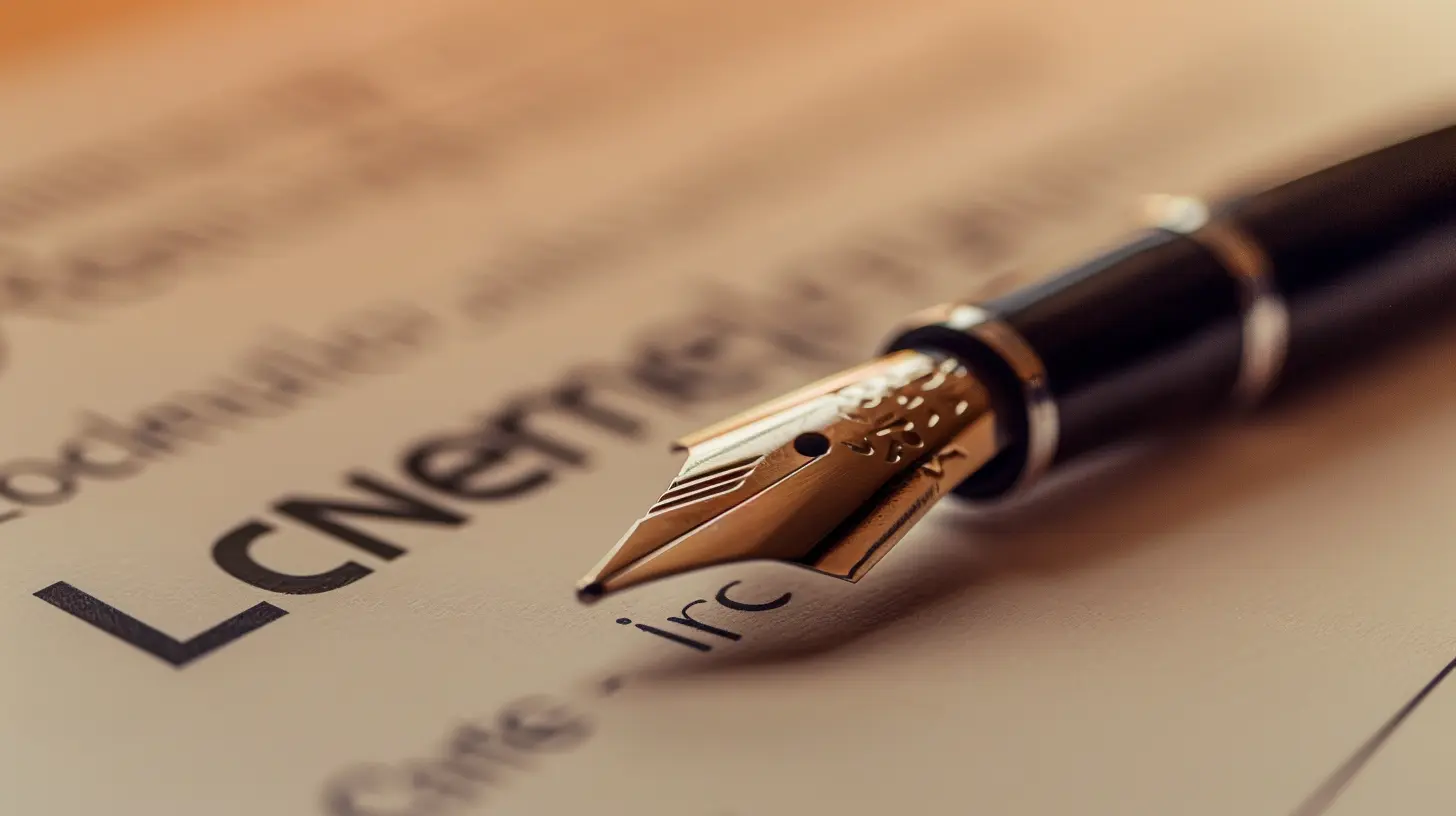How to Address Lease Modifications and Amendments
9 July 2025
Leasing agreements are the backbone of any rental relationship, ensuring that both landlords and tenants operate within a legally binding framework. But let’s face it—life happens! Circumstances change, businesses evolve, and lease terms may require adjustments. Whether it's a tenant needing more space, a landlord adjusting rent, or a shift in lease duration, modifications and amendments are inevitable.
So, how do you handle lease modifications like a pro? We’ve got you covered! In this guide, we’ll break down the process step by step, ensuring a smooth negotiation while keeping everything compliant and fair for both parties. 
What is a Lease Modification or Amendment?
Before we dive into the how, let’s clarify what we’re talking about.- A lease modification refers to any change made to the original lease agreement, altering key terms like rent, duration, or permitted use of the property.
- A lease amendment is a formal document that outlines specific changes without completely replacing the original lease.
Think of it like updating a phone contract—you’re not tearing up the whole agreement; you’re just tweaking specific terms to better fit the situation. 
Common Reasons for Lease Modifications
Lease adjustments can happen for a variety of reasons. Some of the most common scenarios include:1. Rent Adjustments
Market conditions fluctuate! A landlord might increase rent due to inflation or property appreciation, while a tenant may seek a reduction if the market softens.2. Lease Term Extensions or Reductions
A tenant may need an extended lease due to business growth or personal circumstances, while others might want to downsize earlier than expected.3. Expansion or Downsizing
Businesses evolve. A commercial tenant may need additional space or, on the flip side, may no longer require as much square footage.4. Changes in Property Use
A tenant might request a modification to accommodate a new business model, storage needs, or workspace adjustments.5. Adding or Removing Tenants
In residential leasing, roommates or partners may move in or out, requiring an official update to the lease.6. Addressing Maintenance Responsibilities
Landlords and tenants may negotiate changes regarding who is responsible for specific repairs or improvements.Regardless of the reason, approaching these modifications with clarity and professionalism is key. 
How to Address Lease Modifications and Amendments
Modifying a lease isn’t as simple as shaking hands on a verbal agreement—it requires a structured process to ensure everything is legally sound. Here’s how to do it right:1. Start with an Open Discussion
Communication is everything! Whether you're a landlord or tenant, start with an honest and open conversation to discuss the proposed changes. Address:- Why the change is needed
- How it benefits both parties
- Possible compromises to ensure fairness
Being transparent from the get-go reduces friction and prevents misunderstandings later.
2. Review the Original Lease Agreement
Before making any changes, revisit the original lease. Some agreements already contain clauses that allow for modifications under specific conditions. For example, some leases include rent escalation clauses or early termination options.Understanding the contract’s existing terms will help determine the flexibility you have in negotiations.
3. Negotiate Terms That Work for Both Parties
Lease changes should be a win-win! During negotiations:- Discuss financial implications (e.g., rent changes, security deposits)
- Outline potential benefits and drawbacks
- Set clear boundaries on what is and isn’t negotiable
If needed, involve a legal professional to mediate complex negotiations.
4. Put Everything in Writing
A handshake deal might sound good, but verbal agreements don’t hold up in court. Once both parties agree to the changes, put them in writing to ensure clarity and legal protection.Key elements to include:
- The names of all involved parties
- The original lease details
- A clear description of the modifications
- Signatures from both landlord and tenant
- The date of amendment execution
5. Use a Lease Amendment Form
To simplify the process, consider using a standardized lease amendment form. These forms are widely available online or can be drafted by a real estate attorney.They ensure that all necessary components are included while keeping the document legally sound.
6. Ensure Legal Compliance
Different states and countries have varying laws regarding lease modifications. Some jurisdictions require specific clauses, disclosures, or even notarization.Consulting a real estate lawyer or local property authority will help you stay compliant with legal regulations.
7. Document Everything
Keep copies of all communications, negotiations, and signed agreements. If any disputes arise in the future, having a well-documented paper trail will provide necessary evidence.
Potential Pitfalls to Avoid
Even with the best intentions, lease modifications can go sideways if not handled properly. Here are some mistakes to steer clear of:❌ Ignoring Market Trends
If you're adjusting rent, failing to consider the current market condition can lead to unfair pricing—either too high or too low. Always research local rental trends before negotiating.❌ Failing to Specify Details
Vague lease amendments leave room for disputes. Be as specific as possible to avoid confusion down the line.❌ Not Getting Proper Approval
For commercial leases, landlords may need approval from lenders or property management before making modifications. Skipping this step could create legal complications.❌ Relying on Verbal Agreements
If it’s not written down, assume it doesn't exist legally! Always document changes in an official amendment.When to Seek Legal Advice
While many lease modifications can be handled independently, there are times when hiring a legal expert is a smart move. Consider consulting a real estate attorney if:- The lease change involves complex financial implications
- There’s disagreement between the parties
- The modification affects tax or zoning regulations
- The original lease contains vague or unclear language
Spending a little on legal guidance upfront can save you from costly legal battles down the road.
Final Thoughts
Lease modifications and amendments don’t have to be a headache! With clear communication, fair negotiations, and proper documentation, both landlords and tenants can adjust their agreements smoothly and legally.Whether you're looking to increase rent, extend a lease term, or tweak responsibilities, always approach lease changes with professionalism and transparency. And remember—when in doubt, put it in writing!
By following these steps, lease modifications can be a hassle-free process, ensuring both parties walk away satisfied and protected.
all images in this post were generated using AI tools
Category:
Lease AgreementsAuthor:

Cynthia Wilkins
Discussion
rate this article
1 comments
Felicity McCartney
When dealing with lease modifications and amendments, clarity is key. Always outline specific changes, ensure all parties review and consent, and seek legal advice if needed. Document everything in writing to maintain transparency and avoid disputes down the line. A well-drafted amendment protects everyone involved.
July 11, 2025 at 3:48 AM

Cynthia Wilkins
Thank you for your insightful comment! Clear documentation and legal guidance are indeed vital for successful lease modifications.


